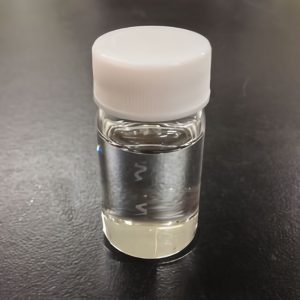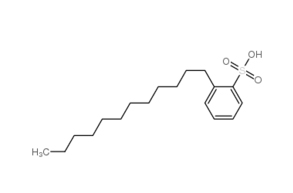
Linear Alkylbenzene LAB

Specifications
| Item | Index |
| APPEARANCE | CLEAR & BRIGHT |
| COLOR | 10 Max. |
| Density (20℃,g/cm3) | 0.855-0.870g/ml |
| REFRACTIVE INDEX (20℃) | 1.481-1.485 |
| BROMINE NUMBER | 20mg Br/100g Max. |
| SULPHONATABILITY | 98.5% Min. |
| AVERAGE MOLECULAR WEIGHT | 239-244 |
| DISTILLATION 5% 95% | 280℃ 310℃ |
| Carbon Distribution(wt%) Less than C10 C10 C10+C11 C12 C13+C14 C14 Greater than C14 | 1.0% Max. 16% Max 30% to 55% 20% to 50% 5% to 30% 4.5% Max. 0.5% Max. |
| 2-PHENYLISOMER | 10% to 25% |
Packing & Storage
| Packing | in 200kg drum, 1000kg IBC |
| Storage | 20℃, 2 years. |
| Shipping | Room temperature in China; may vary elsewhere |
Free Quote
At present, the company has more than 10 experienced export sales .
For samples, pricing, or more information, please call us at 0086-25-52397805 or mail to info@ascent-chem.com or We will respond to you as soon as possible.
Tel: 0086-25-52397805
E-mail: info@ascent-chem.com

General Information
| Common Names | Linear Alkylbenzene | LAB | ||||||
| Structure |  |
||||||
| CAS No. | 67774-74-7 | Boiling Point (℃) | 279℃ | ||||
| Molecular Weight | Melting Point (℃) | N/A | |||||
| Appearance | Transparent liquid | Vapor Specific Gravity | 0.856 | ||||
| HS Code | 38170000 | Flash Point | 279°F | ||||
| Solubility | N/A | Autoignition Temperature (℃) | N/A | ||||
| Safety Phrases | |||
| RIDADR | |||
| WGK Germany | |||
| Packaging Group | |||
| Hazard Class | |||
| SYMPTOMS | PREVENTION | FIRST AID | |
| Inhalation | Cough. Sore throat. | Use local exhaust or breathing protection. | Fresh air, rest. |
| Skin | Redness. Burning sensation. Itching. | Protective gloves. | Remove contaminated clothes. Rinse and then wash skin with water and soap. |
| Eyes | Redness. Pain. | Wear safety goggles. | First rinse with plenty of water for several minutes (remove contact lenses if easily possible), then refer for medical attention. |
| Ingestion | Abdominal pain. Nausea. Vomiting. | Do not eat, drink, or smoke during work. Wash hands before eating. | Rinse mouth. Induce vomiting (ONLY IN CONSCIOUS PERSONS!). Refer for medical attention . |
UOP process in which alkenes are produced from dehydrogenation of n-alkanes and then alkylated into straight-chain alkyl benzene by HF catalysis
Frequently Asked Questions
LAB Production and Applications
Linear alkylbenzene (LAB) is an important organic compound that is widely used in the production of detergents. It is a type of alkylbenzene where the alkyl group is linear, meaning it consists of a chain of carbon atoms with no branches.
LAB is typically produced through the process of alkylation, where benzene reacts with a linear alkylating agent such as olefins or normal paraffins. The resulting product is a mixture of various isomers of linear alkylbenzenes, with different chain lengths. These isomers can be separated and purified to obtain the desired LAB product.
One of the main applications of LAB is in the production of linear alkylbenzene sulfonate (LAS), which is a key ingredient in many household and industrial detergents. LAS is synthesized by sulfonating LAB, which involves adding a sulfonic acid group (-SO3H) to the benzene ring of the LAB molecule. This sulfonation process improves the water solubility and surfactant properties of LAB, making it an effective detergent ingredient.
LAB has several desirable properties that make it suitable for detergent applications. It is biodegradable, meaning it can be broken down by natural processes, which is important for reducing environmental impact. LAB is also stable under a wide range of conditions, including high temperatures and varying pH levels. It exhibits good detergency, emulsification, and foaming properties, making it effective for cleaning and removing stains.
Besides its use in detergents, LAB has other industrial applications as well. It can be used as a solvent in the production of various chemicals, as a lubricant additive, and as a raw material for the synthesis of other organic compounds.

